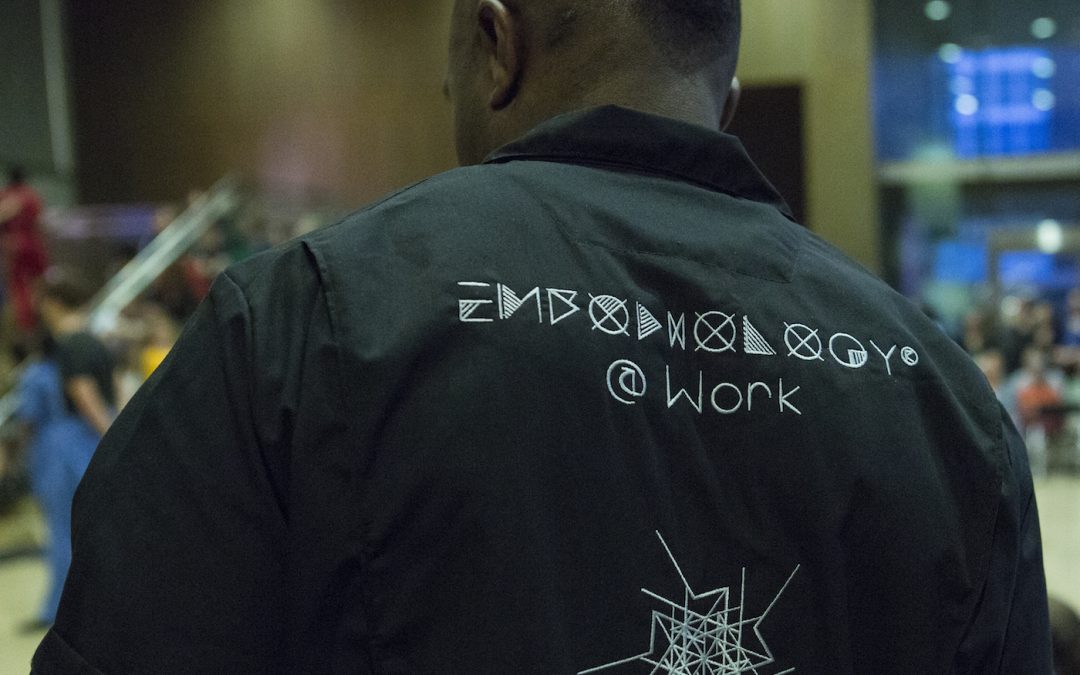Strange things are at work in Madison’s Chazen Museum of Art on this Wednesday evening in early May. As outside passersby rush home before an approaching thunderstorm, inside a curious crowd arranges itself on stools, leans against walls, spills over the gallery stairs. Among them, 15 figures in colorful jumpsuits bustle about, expertly giving instructions. As the embroidered letters on the back of their uniforms reveal, they are “Embodiologists”, newly acclaimed experts of improvisation, movement and sensing.¹
They have spent the past months in training with Dr. S. Ama Wray, this semester’s University of Wisconsin–Madison Arts Institute’s Interdisciplinary Artist in Residence. Based on ethnographic studies of improvisation methodologies with the Ewe people (West Africa) and her own background in dance, Dr. Wray has developed and trademarked the practice of Embodiology. A method her students from various disciplines were able to exercise, experiment with, and reapply in the course “The Art of Improvisation: From Phronesis² to the Production of Practical Knowledge”. Their semester-long collaboration culminates in tonight’s performance at the Chazen on the UW-Madison campus.
Wray’s residency is presented by the University of Wisconsin–Madison Arts Institute. It is hosted by the Art Department with co-sponsoring Departments of Art History, Dance, Afro-American Studies and African Cultural Studies. The faculty lead is Associate Professor Faisal Abdu’Allah of the Art Department. Additional event support is provided by the Chazen Museum of Art.³
The previous Sunday afternoon in the same space, I had the chance to speak to five Embodiologists, just before one of their last rehearsals: Julia Levine (BA in Geography and Environmental Studies), Sean Clute (MFA in Figurative Sculpture), Liam Hutchison (BA in Agricultural and Applied Economics), Sam Douglass (MA Civil Engineering), and Ryan Cray (BA in Geography and Environmental Studies). Is it possible to put this body practice of improvisation into words? I was curious to learn more about their experience with this project, their thoughts on improvisation, and its impact on their studies and creative work across diverse fields.

